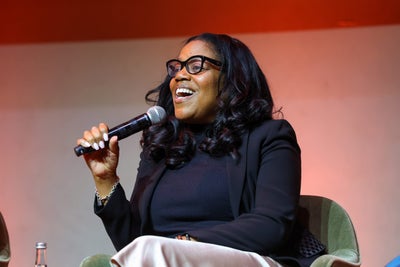California Black Media Staff
On June 29, the Academy of Motion Picture Arts and Sciences made a powerful stride towards inclusion and diversity. The Beverly Hills-based organization, with approximately 6,000 members, extended over 600 invitations – about 10 percent of its membership – to artists and executives from minority backgrounds who have made outstanding contributions to the motion picture industry.
The move follows a pledge it made in January to double the number of women and diverse members on its board by the year 2020. The goal, they say, is to bring more balance to the current 94 percent white voter majority it currently has.
Some of the Academy’s historic invites include Nia Long (Brandi in “Boyz N the Hood”), Michelle Rodriguez (Diana Guzman in “Girlfight”), Michael B. Jordan (Adonis Johnson in “Creed”), Keenan Ivory Wayans (“White Chicks” and “A Low Down Dirty Shame”), and the Wachowskis (Directors of the “Matrix” trilogy). While the initiative is worth noticing, some feel that it is only the first step towards a more inclusive and diverse industry.
“The most recent class of invited members is an important gesture but before we arrive at an Academy that remotely resembles America, the issue of the 6000-plus members who aren’t very diverse at all, will have to be addressed,” says Darnell Hunt, Director of the Ralph J. Bunche Center for African American Studies at the University of California Los Angeles. “Unfortunately, adding a few hundred new diverse members each year will have a relatively small impact on the overall share of diverse members. It’s simple math.”
Last year, the world witnessed widespread outcry about the lack of inclusion and diversity in the industry. Actress Jada Pinkett Smith sounded off in a social media video post expressing concerns about the lack of inclusion among the 2016 Oscar nominees. Soon after her passionate criticism, the hashtag #OscarsSoWhite began trending on social media. For the second year in a row, all 20 nominees in the acting categories were white. In a sign of protest, Smith as well as filmmakers Spike Lee, Ava DuVernay, and Michael Moore declared they would not attend the Academy Awards ceremony.
The Oscars and Hollywood have been majority white for a long time. Only this time, the taboo topic of its routine exclusion of minorities could not be easily shut down, overlooked or forgotten. In the entire 88-year history of the Academy Awards, only 6.4 percent of all nominees were non-white with Halle Berry being the only Black woman to win Best Actress Award. During the same time, not even one Latin actress has won the award in the Best Actress category. Currently, only 2 percent of Academy voters are Black.
“I applaud The Academy for its bold efforts but I think the public should understand that there are many barriers that prevent minorities from being involved as writers, producers and actors that would position them to be nominated in the first place,” says J.R. Pittman, co-founder of the HDA.
On June 7th, the HDA hosted it’s Inclusion Symposium at the Intercontinental Hotel in Century City titled “Where Do We Go From Here?” A salute to Martin Luther King, Jr.’s 1967 book, Where Do We Go From Here, urging an inclusive America. The symposium addressed the dynamics of the diversity predicament in the film and television industry, while understanding that real meaningful change will occur only if every aspect of talent engagement is facilitated. Rather than centering on the inclusion dilemma as an isolated item on the agenda, the event’s main theme had a more holistic approach: working toward a comprehensive solution by taking actionable steps to solve Tinseltown’s fundamental diversity problem.
“Another concept to understand is the definition of the lack of inclusion. Simply put, it can be interpreted as the underrepresentation of minorities in meaningful roles. The list includes women, African Americans, Hispanics, Asian Americans, members of the LGBT community, and other ethnic minorities,” says Hunt.
Hunt, who was also the keynote speaker at the HAD symposium, spoke at length about the lack of minority inclusion. In his annual Hollywood Diversity Report titled “Busine$$ As Usual?”, Dr. Hunt shed light on just how “deplorable” he says the problem really is.
According to Hunt’s research, there are three white film directors for every Black director, and there are three white film leads for every ethnic individual with the role of a lead. Furthermore, minorities are also underrepresented nearly. 5:1 among film writers, even though they make up 40 percent of the US population. Minorities are expected to become a majority within a few decades
The HDA Inclusion Symposium closed with the unveiling of what is called “The Pittman-Burke Approach to Inclusion and Diversity.” It is defined as a comprehensive plan to ensure more meaningful talent engagement that will ultimately create jobs both in-front-of and behind the camera.
“We are hopeful that the Academy’s announcement will inspire more creative thinking that will include diverse talent in the process,” said Vanzil T. Burke, co-founder of the HDA and President and CEO of the Burke Management Firm.



